 2005 Peugeot 107 (Phase I, 2005) 5-door Dimensions, Size & Specs
2005 Peugeot 107 (Phase I, 2005) 5-door Dimensions, Size & SpecsMeasurements of the 2005 Peugeot 107 5-door, engineered for optimal performance and comfort
| Dimensions | |
|---|---|
| Length: | 3430 mm135.0 in11.3 ft |
| Width: | 1630 mm64.2 in5.3 ft |
| Width (Opened Mirrors): | 1855 mm73.0 in6.1 ft |
| Height: | 1470 mm57.9 in4.8 ft |
| Trunk Capacity: | 130 liter4.6 cu ft |
| Trunk Capacity (Max): | 712 liter25.1 cu ft |
| Weight Specifications | |
| Curb Weight: | 805-890 kg1775-1962 lbs |
| Maximal permitted Weight: | 1190-1245 kg2624-2745 lbs |
| Roof Load: | 50 kg110 lbs |
| Tire Specifications | |
| Rims Size: | 14-inch rims:
|
| Tire Size: |
|
The Peugeot 107 Phase I, introduced in 2005 and produced until 2008, is a compact 5-door hatchback designed primarily for urban mobility. Measuring 3430 mm (135.0 inches) in length, 1630 mm (64.2 inches) in width, and with a height of 1470 mm (57.9 inches), it is a small city car that offers easy maneuverability and practicality in congested environments. When including the side mirrors, the width extends to 1855 mm (73.0 inches), a useful detail to consider for parking and narrow streets.
This lightweight vehicle weighs between 805 and 890 kg (1775 to 1962 lbs), depending on the trim and equipment, with a maximum permissible weight ranging from 1190 to 1245 kg (2623 to 2745 lbs). The compact size does not limit its practicality; the car offers a luggage capacity of 130 liters (4.6 cubic feet) with the rear seats up, which expands significantly to 712 liters (25.1 cubic feet) when the rear seats are folded down, allowing it to accommodate larger loads when necessary.
The Peugeot 107 rides on 14-inch rims sized 4.5J x 14, fitted with tires sized 155/65 R14. It also supports a roof load of up to 50 kg (110 lbs), perfect for carrying additional cargo such as roof boxes or bicycles for weekend trips.
Overall, the Peugeot 107 Phase I (2005) model offers a well-balanced mix of compact dimensions, lightweight design, and flexible storage options. It stands out as a practical and economical choice for city driving, easily compared to other small hatchbacks in its class due to its efficient use of space and maneuverability.
Discover the standout features that make the 2005 Peugeot 107 5-door a leader in its class
Have a question? Please check our knowledgebase first.
The Peugeot 107 (Phase I, 2005) 5-door hatchback measures 3430 mm (134.96 inches) in length, 1630 mm (64.17 inches) in width, and 1470 mm (57.87 inches) in height. When the mirrors are opened, the width extends to 1855 mm (73.03 inches). These compact dimensions make the 107 well suited for urban driving and parking, offering a small footprint that is easy to maneuver in tight city environments while still providing sufficient cabin space for passengers.
The curb weight of the Peugeot 107 (Phase I, 2005) ranges from 805 to 890 kg (1775 to 1962 lbs), depending on the trim and equipment. The maximum permitted weight varies between 1190 and 1245 kg (2623 to 2744 lbs). This indicates a lightweight build, contributing to fuel efficiency and nimble handling, while the maximum weight includes passengers and cargo within safe operational limits.
With the rear seats upright, the Peugeot 107 (Phase I, 2005) provides a modest luggage capacity of 130 liters (4.6 cubic feet), suitable for daily errands or small grocery loads. Folding the rear seats down greatly expands the available cargo space to 712 liters (25.1 cubic feet), allowing for larger or bulkier items to be transported. This versatility enhances the practicality of this compact hatchback, accommodating a variety of passenger and cargo needs.
Yes, the Peugeot 107's compact dimensions — 3430 mm (134.96 inches) in length and 1630 mm (64.17 inches) in width (1855 mm or 73.03 inches with mirrors extended)— typically allow it to fit comfortably into a standard home garage. Most residential garages are designed to accommodate larger vehicles, so the 107’s small size provides generous clearance on all sides, easing entry and exit as well as storage.
The Peugeot 107 introduced in 2005 was a new model rather than a direct successor to a previous 107 generation, as this was the first generation of the model. However, when compared to similar small city cars like the Toyota Aygo and Citroën C1—with which it shares the platform—the dimensions are quite similar: compact length around 3.4 meters (11.2 feet), narrow width just above 1.6 meters (5.3 feet), and a low height around 1.47 meters (4.8 feet). This ensures competitive urban maneuverability and parking ease among its peers.
The Peugeot 107 (Phase I, 2005) comes equipped with 14-inch rims sized at 4.5J x 14 and tires with dimensions of 155/65 R14. This combination strikes a balance between comfort and agility. The tire width of 155 mm (6.1 inches) and profile of 65 help absorb bumps and irregularities on urban roads while maintaining responsive handling. The rim size supports adequate grip and stability, which enhances safety and driver confidence on city streets.
The Peugeot 107 (Phase I, 2005) supports a maximum roof load of 50 kg (110 lbs). This allows for carrying lightweight items on a roof rack, such as bicycles, small luggage boxes, or sports equipment. Given the car's compact size, roof load capability can significantly extend its cargo capacity for trips or transporting bulky outdoor gear, provided that the load is evenly distributed and securely fastened.
With its compact footprint, the Peugeot 107 (Phase I, 2005) offers practical seating for four to five passengers, although comfort is optimized for front occupants. The rear seats provide enough space for shorter trips or children, and seats are designed ergonomically to maximize usable interior room within the hatchback's small exterior size. Compared to competitors like the Citroën C1 and Toyota Aygo, the 107 delivers a similar experience of cleverly packaged urban mobility, prioritizing ease of ingress, visibility, and functionality over luxury.
The Peugeot 107 (Phase I, 2005) was produced from 2005 to 2008. During this initial production phase, the car largely maintained consistent specifications and design, focusing on establishing itself as an affordable, efficient city car. Minor updates and facelifts were introduced later in 2009 with the Phase II generation, which brought subtle styling changes and improvements in equipment but the Phase I model remained an important early offering aimed at urban drivers seeking economical transport.
The Peugeot 107 (Phase I, 2005) excels as an urban commuter due to its small size (3430 mm long by 1630 mm wide), lightweight construction (805 to 890 kg), and excellent maneuverability. Its compact dimensions make city parking and navigating traffic easier, while the efficient use of interior space and optional fold-flat rear seats improve cargo flexibility. Low running costs, modest roof load capacity of 50 kg, and simple mechanical setup reinforce its appeal for budget-conscious drivers prioritizing convenience and economy in urban environments.
Discover similar sized cars.
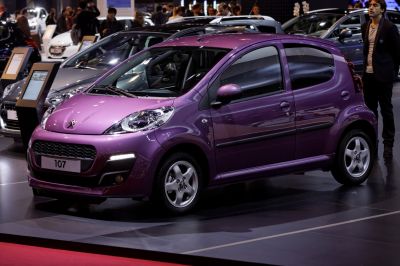
| Production: | 2012-2014 |
|---|---|
| Model Year: | 2012 |
| Length: | 3430 mm135.0 in |
| Width: | 1855 mm73.0 in |
| Height: | 1465 mm57.7 in |
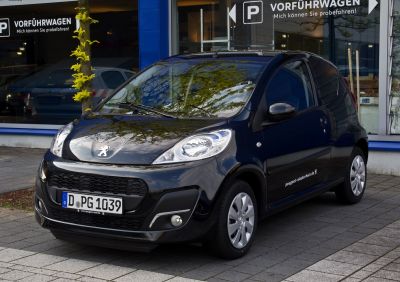
| Production: | 2012-2014 |
|---|---|
| Model Year: | 2012 |
| Length: | 3430 mm135.0 in |
| Width: | 1855 mm73.0 in |
| Height: | 1465 mm57.7 in |
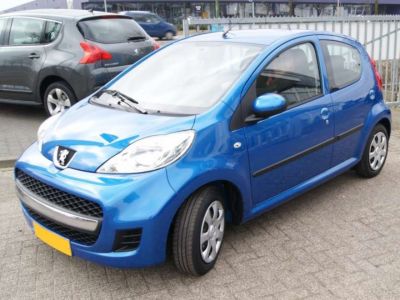
| Production: | 2008-2012 |
|---|---|
| Model Year: | 2009 |
| Length: | 3430 mm135.0 in |
| Width: | 1855 mm73.0 in |
| Height: | 1465 mm57.7 in |
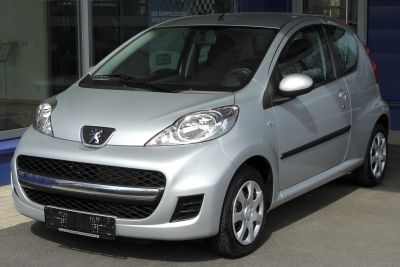
| Production: | 2008-2012 |
|---|---|
| Model Year: | 2009 |
| Length: | 3430 mm135.0 in |
| Width: | 1855 mm73.0 in |
| Height: | 1465 mm57.7 in |
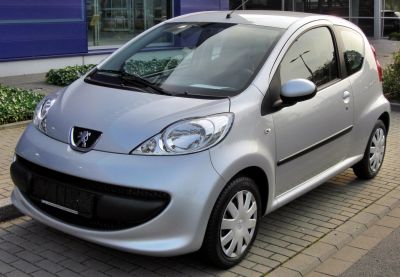
| Production: | 2005-2008 |
|---|---|
| Model Year: | 2005 |
| Length: | 3430 mm135.0 in |
| Width: | 1855 mm73.0 in |
| Height: | 1470 mm57.9 in |
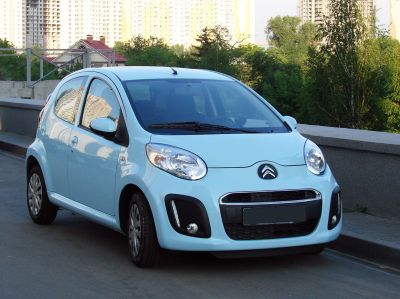
| Production: | 2012-2014 |
|---|---|
| Model Year: | 2012 |
| Length: | 3440 mm135.4 in |
| Width: | 1855 mm73.0 in |
| Height: | 1465 mm57.7 in |
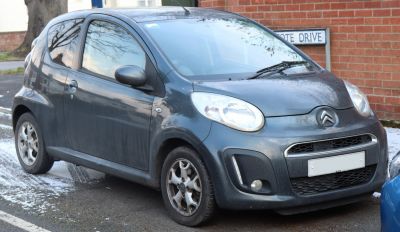
| Production: | 2012-2014 |
|---|---|
| Model Year: | 2012 |
| Length: | 3440 mm135.4 in |
| Width: | 1855 mm73.0 in |
| Height: | 1465 mm57.7 in |
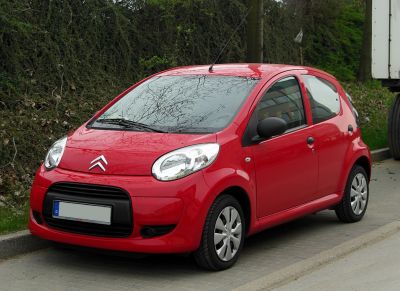
| Production: | 2008-2012 |
|---|---|
| Model Year: | 2008 |
| Length: | 3435 mm135.2 in |
| Width: | 1855 mm73.0 in |
| Height: | 1470 mm57.9 in |
